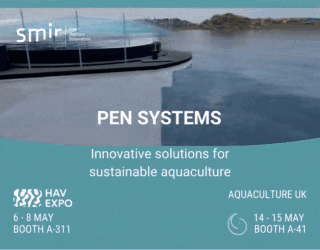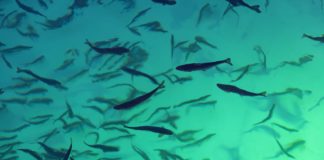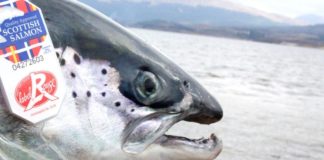Despite a weaker salmon price, Marine Harvest clings to dividend target
The big salmon farmer posted its fourth-quarter earnings on Wednesday. Although much of the result was made known in an earlier trading update, brokerage houses were still occupied by the company’s balance sheet, cash flow and that dividend.
“The quarterly results shows an EBIT of EUR 180 million (guidance was EUR 177 million), yet the company is reporting a pre-tax net profit that’s nearly zero after writing down EUR 97 million in Chile and EUR 95 million in negative IFRS adjustments for biomass. Your cash-flow guidance shows that the total guidance for payments is increasing from EUR 580 million to EUR 595 million.
Debt target
“At the same time, they’re also increasing the net debt target by EUR 150 million (EUR 0.3 per share) — not because of higher production targets, but rather due to “expected increases in long-term earnings”,” wrote Nordea analyst, Kolbjorn Giskeodegaard, in a note to investors.
Read €130Mn cash dividend from Marine Harvest Q4
“When we look at it, they’re now taking aim at increasing net debt in order to maintain high dividend payments. They’re implementing a cost-reduction program that takes aim at reducing costs by up to a kroner a kilo, which we see as positive. The dividend for the fourth quarter was more or less in-line with expectations, but lower than the previous quarter due to a negative net cash flow in the quarter. We will increase our estimate for dividends in 2018 while thinking about higher net debt targets,” Giskeodegaard continued.
Old Statoil move
The decision to increase net debt to maintain high dividend payments is not unlike what Statoil did during the oil-price slump of recent years. Sparebank 1 Markets analyst Tore Tonseth noticed the move.
“With salmon prices down, it looks like the market is forgetting that the difference between a salmon price of EUR 5 (today’s price) and EUR 6 (Fishpool six months ago) is reduced cash flow of over 40 percent. With a EUR 0.27 EPS (or earnings per share), Marine Harvest Group in the quarter is paying out 100 percent of EPS. The current level of dividend is not sustainable if salmon prices don’t rise to a higher level,” Tonseth said.
Cost savings
He, too, noticed Marine Harvest has jacked-up its target for net interest-bearing debt.
“Not unexpectedly, Marine Harvest is increasing its NIBD target to EUR 1.2 billion (from EUR 1.05 billion), driven up by a new feed factory in Scotland, and a general NIBD-per-kilogram relationship increased from 1.8 to 2.0. The acquisition of Northern Harvest has also likely affected this target,” Tonseth’s note said.
“On the positive side, MHG is starting a cost-cutting program of EUR 50 million, although with the cost-growth seen in recent years, that should not come as a surprise,” Tonseth continued.










